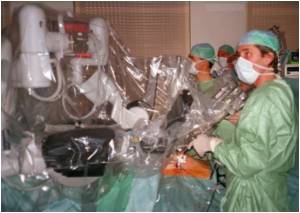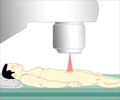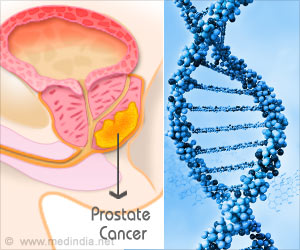Each year around 180,000 men are diagnosed with prostate cancer and is considered to be one of the most common types of cancer in the country.

Researchers evaluated the use and cost of surgical and radiation treatments for prostate cancer using Medicare linked data from more than 45,000 men who were 65 years or older between 2002 and 2005. The data accounted for patients who received two types of surgical treatments: the older treatment, open radical prostatectomy and the newer treatment, robot-assisted or laparoscopic prostatectomy; and two types of radiation treatments: the older type, three-dimensional conformal radiation therapy (3D-CRT) and the newer option, intensity-modulated radiation therapy (IMRT).
Researchers report that among surgical patients, the number who received robot-assisted or laparoscopic prostatectomy increased substantially from 1.5 percent of diagnoses in 2002 to 28.7 percent of diagnoses in 2005. Among patients who received radiation therapy, researchers observed the same trend towards rapid adoption of IMRT, the newer treatment option. In 2002, 28.7 percent of men diagnosed received IMRT compared to 81.7 percent in 2005. Additionally, among men who received brachytherapy, supplemental IMRT increased from 8.5 percent in 2002 to 31.1 percent in 2005. Patients receiving the newer type of therapy tended to live in higher-income and metropolitan regions, and were more likely to have earlier stage disease and be of Asian descent.
Researchers also report that Medicare spending on the newer treatment options was significantly higher than on traditional treatments, with the difference between IMRT and 3D-CRT being nearly $11,000 per patient and the difference between robot-assisted prostatectomy and open radical prostatectomy being $293, although the authors suggest that this is an underestimate of the underlying cost differences in the surgeries since it does not account for the cost of purchasing and maintaining the robot. After extrapolating these numbers to the total U.S. population, researchers report an additional of spending adding up to nearly $350 million in 2005 on newer treatment options when compared to the traditional and less costly alternative therapy for men diagnosed with prostate cancer.
"Our paper should not be interpreted as being "anti-technology", and we do not want to stand in the way of bringing newer and better treatments to market. On the other hand, health care spending is a zero-sum game, and a greater emphasis on comparative effectiveness research is needed so we can better separate the wheat from the chaff. While IMRT has proven itself to significantly reduce the rate of serious rectal bleeding after prostate radiation, the study to show it is cost-effective was not published until 2006, when over 80% of the country was already using it. In the case of robotic surgery, there are still uncertainties over what benefits it has over the open procedure," Nguyen said.
This research was funded through grants from the Department of Defense and the JCRT Foundation.
Advertisement








![Prostate Specific Antigen [PSA] Prostate Specific Antigen [PSA]](https://www.medindia.net/images/common/patientinfo/120_100/prostate-specific-antigen.jpg)





